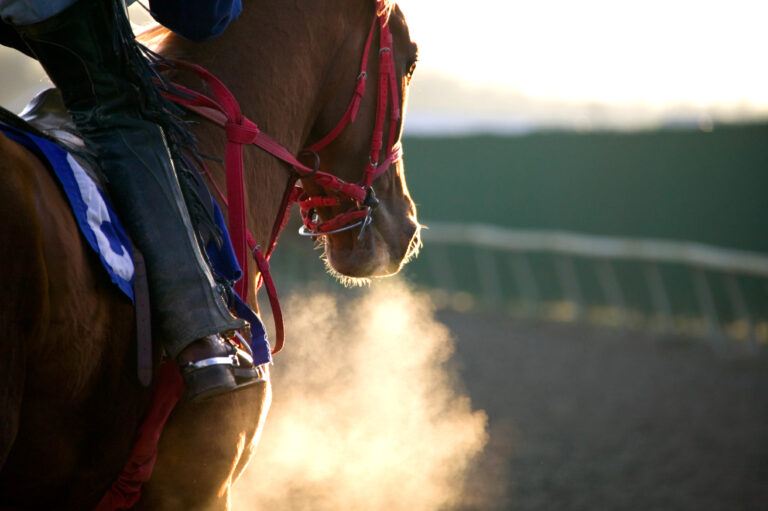
For decades, veterinarians have performed upper airway surgeries in equine athletes—particularly racehorses and hunters—that make abnormal respiratory noises when they exercise. The lack of evidence of efficacy and the optics of some procedures, however, bring into question the ethics of performing these surgeries on animals that cannot consent to treatment.
During a presentation at the 2025 British Equine Veterinary Association Congress, Henry Tremaine, BVetMed, MPhil, CertES, DECVS, DEVDC, FHEA, FRCVS, from B&W Equine Hospital, in Gloucestershire, U.K., discussed this issue and how it relates to equestrian sport’s social license to operate.
He pointed out that the public’s perception of elite equine athletes differs from that of elite human athletes. “Society often celebrates human achievement and may tolerate enhancement if it aligns with narratives of resilience or innovation,” he explained. “Society tends to be more protective of animals (compared to humans that have active consent in the decisions they make), expecting veterinarians to act as guardians of welfare rather than facilitators of performance.”
As such, veterinarians involved in sports medicine must walk a tightrope between trying to help equine athletes perform to their maximum capability while protecting their welfare in a way that’s acceptable to the public, Tremaine said.
The British Horseracing Authority (BHA) has been proactive in this area, mandating since 2018 that racecards must indicate whether a horse has undergone “wind surgery” (e.g., tie-back, tie-forward, epiglottic surgery, ventriculectomy/cordectomy, soft palate cautery) since its last run. Tremaine reviewed BHA data from 2000-2025 showing that 13.7% of 57,000 horses in training had undergone some form of airway intervention, with numbers trending downward slightly since 2020, he noted.
Pathology Causing Airway Obstruction in Horses
Upper airway disorders can be broadly categorized into two groups: Static lesions that cause respiratory obstruction at rest and dynamic ones that primarily affect the horse during exercise.
“Animal welfare is clearly improved by treating lesions obstructing the airways at rest (static pathologies), and ethical considerations are less relevant,” said Tremaine. “More nuanced are those pathologies that cause temporary airway obstruction at exercise—these are more challenging to diagnose and a little more difficult to define.”
Research has shown that dynamic pathologies do have physiologic effects that can impact a horse’s ability to perform, including reductions in tidal volume and minute ventilation, increasing hypoxemia and hypercapnia, lower maximal oxygen consumption, higher blood lactates, and respiratory muscle fatigue. However, he noted that the consequences of these obstructions are variably impactful depending on the type of athletic activity—horses doing endurance or high-intensity exercise like eventing and steeplechasing are more likely to be affected—and the severity of hypoxia.
Surgical treatments for dynamic airway obstruction remain popular, said Tremaine, despite a lack of demonstrated efficacy for certain procedures and the controversial optics of some traditional techniques, such as thermal cautery.
Ethical Perspectives of Veterinary Procedures
When defending veterinary procedures like upper airway surgery, Tremaine said equestrian sport could benefit from:
- Better explanations of the rationale behind sporting disciplines.
- Better clarity of individual treatments and less use of misleading generic terms such as “wind-ops.”
- Consideration of the wider impact of prohibiting individual sports or procedures (i.e., would the inevitable horse wastage serve the goals of animal welfare?).
- Mandatory medical records that include all veterinary interventions.
- Requirement of minimum diagnostic datasets to justify treatment selections.
- Resisting commercial pressures that contravene animal welfare standards (e.g., repeated surgeries, joint medications, etc.).
This applies not only to airway surgeries but any procedure to remove pathology that interferes with athletic performance (e.g., osteochondral fragment removal, angular limb deformity correction, ovariectomy for behavior modification, etc.).
“Good practice would suggest we should try and obtain maximum diagnostic data on all cases presented for surgery,” he said. “And if we are going to restrict certain surgical procedures, it should be done with the same criteria across all veterinary procedures. The perception of the public of what we’re doing is equally as important as what we’re actually doing in reality. We need to make sure the explanation or translation of what we’re doing is well-communicated for the public so they have the ability to make their judgment based on facts rather than rumor.”
From an ethical perspective, all veterinary interventions should be justified based on safety and efficacy and pursued in a patient contingent on an accurate diagnosis, he concluded.
Related Reading
- Ambient Air Pollution’s Effects on Racehorse Performance
- Diagnosing Respiratory Ailments in Horses: Wash or Lavage?
- Managing Severe Equine Asthma
Stay in the know! Sign up for EquiManagement’s FREE weekly newsletters to get the latest equine research, disease alerts, and vet practice updates delivered straight to your inbox.


![[Aggregator] Downloaded image for imported item #18391](https://s3.amazonaws.com/wp-s3-equimanagement.com/wp-content/uploads/2025/09/30141438/EDCC-Unbranded-5-scaled-1-768x512.jpeg)

